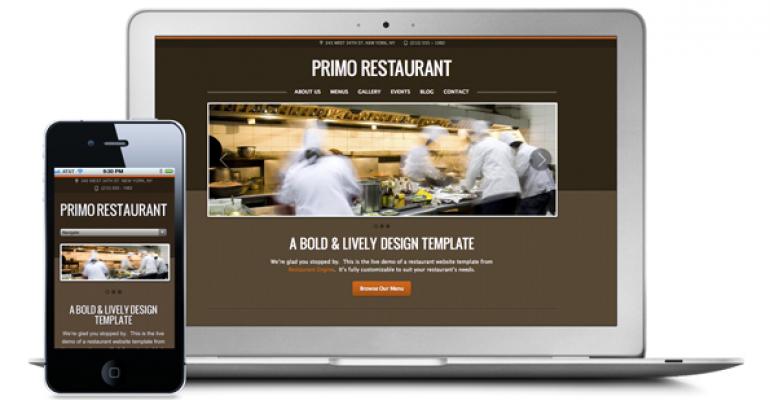New visitors land on your home page in a variety of ways, such as a Google search, or through your Yelp profile. Perhaps a friend mentioned your restaurant on Facebook or your Groupon promotion included a link to your website. No matter where your they come from, the bottom line is this: Visitors who land at your website are qualified prospects, ready to decide whether they will try your restaurant.
Is your restaurant website ready to convert visitors to customers? The following are four ways to improve your chances.
1. Optimize your website for mobile users.
We’ve officially entered the era of smart phones and tablets. These mobile devices are being used for browsing the web more than ever before.
Restaurant owners should pay particularly close attention to their mobile website because it’s more likely than ever that potential guests are out and about and checking their smart phones for places to eat. Your restaurant website needs to be ready to catch them.
Start by ensuring your website doesn’t depend on Flash, since it isn’t supported on the most popular devices like iPhones and iPads. HTML is the standard for web design and it’s accessible on all mobile devices.
Ideally, your website design will scale and adapt to fit any mobile device. All of the information should be easily accessible in the smaller touch-screen format. The goal is to ensure that all of your pages, online menus and even photos can be easily viewed on a smart phone or tablet. Web designers use techniques like “Responsive Web Design” to achieve this.
2. Provide online food menus, not PDFs.
A lot of restaurant websites provide menus that are only available as a PDF download. This is a mistake for several reasons.
First, your menu should be the core element of your restaurant website. Asking visitors to download a file to their computers only serves as a roadblock, not an easy pathway to what they want (a quick glance at your menu).
PDF files can be bulky and slow to download. This can be especially problematic for any mobile users who are on slow connections.
Showcase your online menu as part of your restaurant website itself. Visitors should be able to click and instantly browse your menu just as they would any other page on your website.
Like your print menus, your online menus should include short descriptions and pricing. But you can take your online menus to the next level by adding photos and social sharing buttons, which would allow visitors to share links to their favorite items on Facebook, Twitter, etc.
3. Don’t forget to include contact info.
This sounds pretty basic, but you’d be surprised how many restaurant websites fail to do this. Display your contact information prominently on your restaurant website.
No matter which page your visitor is reading, your contact info should be waiting for them when they’re ready to make that call to book a reservation. So make sure your contact info is visible near the top of all pages on your website.
It’s also a good idea to include your operating hours and an embedded Google map of your location. Both make it that much easier for new visitors to find you.
Bonus tip: Be sure to include your phone number and street address in plain text—in other words, not as part of an image. Most mobile devices will automatically convert your phone number to a link, allowing visitors on smart phones to instantly call you. They’ll do the same for maps, linking them to the maps app on the mobile device. Pretty cool, huh?
4. Curate your best reviews.
Reviews from Yelp, Citysearch, Zagat and Urbanspoon can make or break a restaurant. Luckily, you have a tool to help you capitalize on good reviews: your website!
Clip the best quotes from the positive comments you receive on those sites and showcase them. Remember, visitors to your website are qualified prospects to become customers. A little positive social proof could provide the push they need to get them into your restaurant.
You can devote a special section of your website to your reviews. This might include quotes from positive writeups in newspapers and magazines as well.
Another idea is to include a blog on your website. This is your “voice” as the restaurant owner, where you can express your own opinions (be nice!), stories, inspiration and more. Your blog serves as another place new visitors can get to know you and establish a connection on a personal level, which adds even more incentive for them to become your customers.
The web is yours to win. Your next customers are already online and searching for new places to eat out. By optimizing your website design to attract customers, your restaurant can thrive both online and off.
Brian Casel is the founder of Restaurant Engine, a website design solution tailored to the needs of restaurants. Email Brian at [email protected].
1 comment
Hide comments




